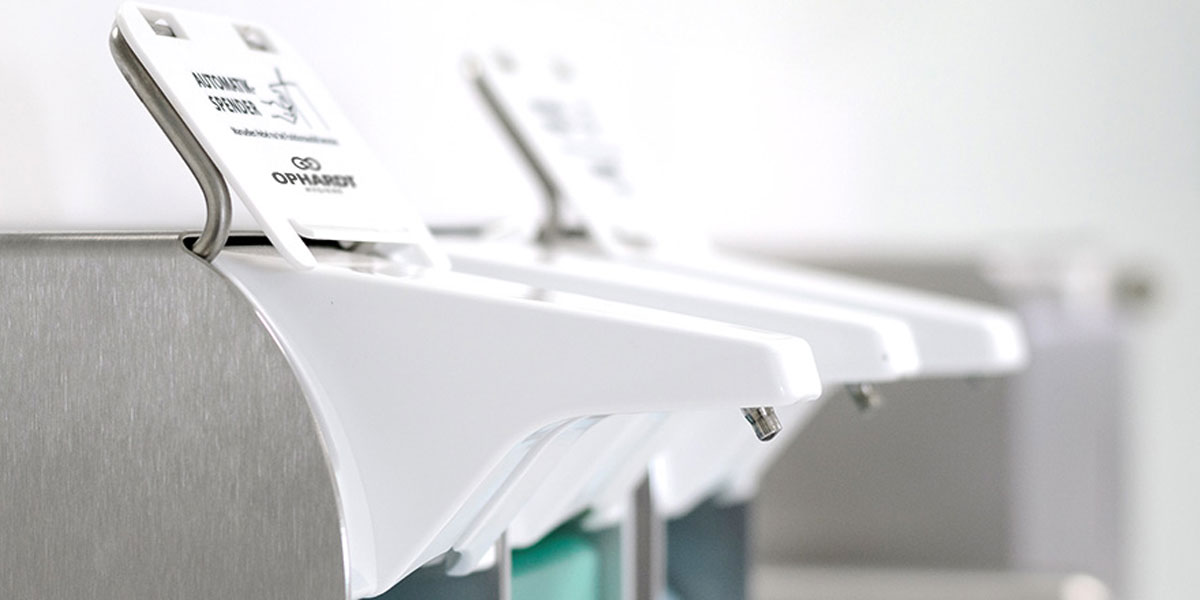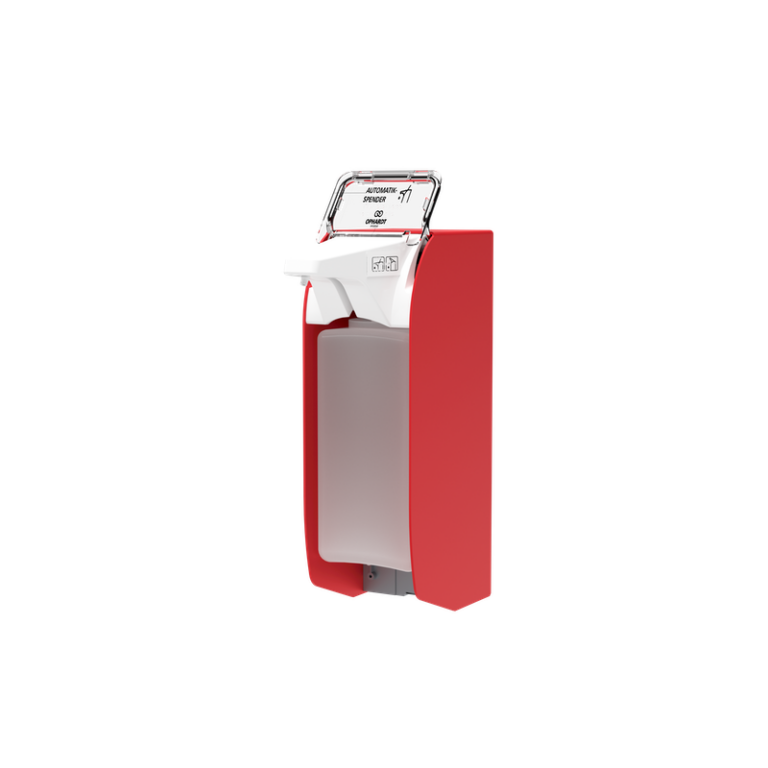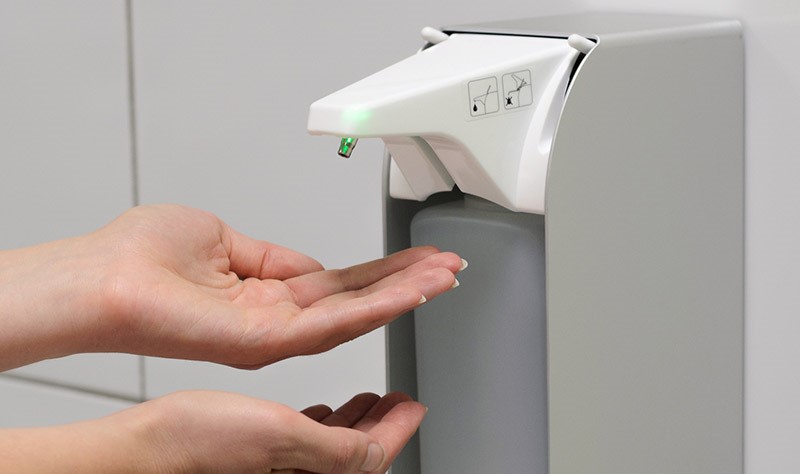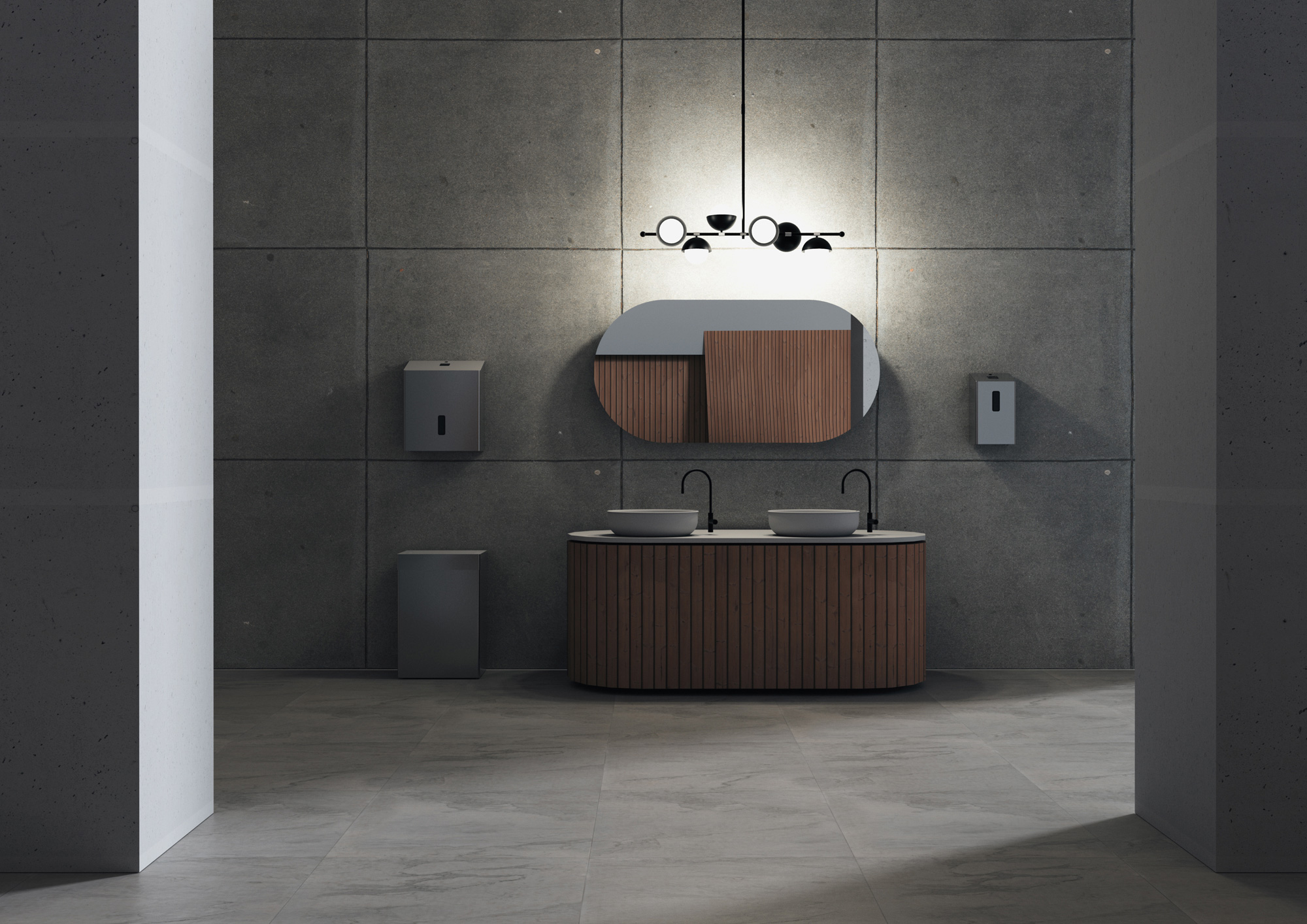Touchless hand sanitizer dispensers are becoming increasingly popular due to their many benefits. As more and more organizations switch to touchless dispensers, battery life is a pressing question. How many hand disinfections can take place before the batteries need to be replaced? To find out, we took a closer look at the leading disinfection dispenser from the ingo-man® brand.
It is well known that hand disinfection is the most important measure to effectively control infectious agents and protect people from disease. The COVID-19 pandemic led to an explosion of new hygiene infrastructure. Gone are the days when we only expected to find disinfectants as visitors or patients in healthcare facilities. Now many, if not most, public facilities offer hand sanitizing options. Especially notable is the increase in the market share of hand sanitizer dispensers.
What is the ideal power source for a dispenser?
Unlike manual hygiene dispensers, sensor-controlled devices require a power source. It is very uncommon to find wired dispensers that can be plugged into a facility’s electrical grid. battery-powered dispensers are much more common because they offer greater flexibility to install and move dispensers where they are needed.
Hand disinfection is especially important at the point of care for patients. A hands-free dispenser that must be plugged into an outlet is more inconvenient to place at a patient’s bedside. Because hand sanitizer dispensers also need to be moved more frequently in high-traffic access areas, batteries are the best choice for most installations. The convenience of untethered touchless dispensers comes with the need to replace batteries.
How many activations?
How long do batteries last in a hand sanitizer dispenser? So often that it is a logistical and budgetary problem or so few that it turns out to be a minor inconvenience? OPHARDT Hygiene, the industry’s award-winning innovator, has conducted extensive research and development to answer this question with certainty and ensure that batteries last longer. With more than 50,000 activations between battery replacements, ingo-man® Euro dispensers offer incredible efficiency and minimize the amount of maintenance required.
The factors that determine dispenser battery life
The exact life of batteries in a disinfection dispenser is determined by several factors. The viscosity of the filling material. For example, liquid hand sanitizers are easier to dispense than viscous sanitizer gel or even soap. Less viscous formulas extend battery life. The time that has passed since the last battery replacement is also a factor. For the longer it has been since the last battery change, the less effective the batteries are. The choice of battery type also plays a role in the performance of hands-free disinfectant dispensers.





